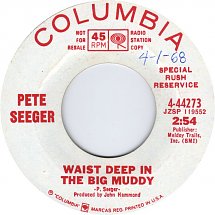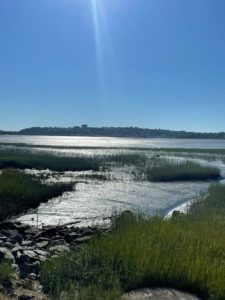
There are two things you can count on in every local election cycle: personal attacks and complaints about development.
Like clockwork— every January-March—we hear accusations that one or more of the candidates are on “Team Developer”, in the “pocket of developers” and or “on the take.”
Follow the money, we are told.
Delray has been ruined; we are told.
Downtown is so busy nobody goes there anymore (Yogi Berra would love that one).
We hear that candidates are evil, weak, and not who they say they are.
And we wonder why citizens want nothing to do with local politics and why promising leaders treat public service like it’s a manchineel tree—a single bite of its fruit can be fatal and touching the bark, sap, or leaves gives you painful blisters.
“Let’s jump into the polluted pool,” said no one ever.
We can do better, but we don’t.
And the cycle continues.
These days, the attacks aren’t limited to the candidates, they are also leveled at supporters of the candidates as well, local business owners who dare to express an opinion and even their innocent clients who might find themselves in the middle of a blood feud they know nothing about.
That’s a new wrinkle and a bad one.
But trust me, the fear is real.
I went to a “kick-off” party for a commission candidate recently and noticed that when asked to sign in some people refused. They were fearful of being “outed”, worried that they would be punished if they were seen at the “wrong” place with the “wrong” people.
“I have a business,” said one secret supporter to a volunteer. “I just can’t take the risk.”
I don’t know about you, but I think we should aspire to live in a place where we can safely express our opinions without fear of retribution or fear that if we do so, our business or favorite local charity will be targeted by vengeful politicians.
I want to live in a place where if I need an approval for a project or a permit to fix my kitchen, I don’t have to worry about who I was seen dining with at City Oyster or whose sign I have on my lawn.
Here’s a concept we ought to consider: how about we vote on the merits of the project? Let’s leave the personalities out of it.
Yes, I’m aware that we have a lot on our plates these days. We struggle with rising insurance rates, crazy grocery bills, high rents and the usual array of buffoonery coming out of Washington D.C.
It’s easy to see why people tune out local politics.
But local politics are important.
If we elect the wrong people, civic achievements like Old School Square can go away in one night and cost taxpayers millions of dollars.
Elect the wrong people and suddenly an independent CRA that got things done can be commandeered by politicians late one night (without public notice) and an important economic development tool gets compromised when those politicians promptly make the agency political—imagine that.
If we elect the wrong people the culture at City Hall changes.
What does that mean for you?
Well, getting a permit for your home improvement project can turn into a game of attrition, a simple public records request may take months to fulfill (if it gets fulfilled at all, I’ve been waiting on one since before Thanksgiving) and you may wake up one day to a giant sucking sound of police officers and firefighters leaving your town for better pastures.
Speaking of fire, how long does it take to replace a fire station?
The one on Linton sits abandoned for years, while firefighter/paramedics work out of a trailer. And while we wait, the cost of capital and construction costs soar.
Hey, it’s only taxpayer money….
So, here’s the big reveal.
Local government matters.
Local leadership counts.
But the political process is ugly and awful at all levels.
It’s going to be hard to drain the swamp that is Washington D.C.
I believe, someday soon, that we will be forced to do so because if you keep smashing against the guardrails someday you break through and you go off the cliff. And then you have to hope you survive the fall.
Pause, breathe… whew… sometimes it feels good to vent.
But let’s bring it back home shall we; to quote “Tip” O’Neill “all politics is local” and while fixing D.C. will take a Herculean effort, we can surely improve our little corner of this country. Yes, we can. And we must.
How?
We can vote. So many of us don’t, but we should.
We can insist on empathy, kindness, and respectful debate.
We can ask candidates to debate their respective visions and discuss what makes them think they can deliver for the people they work for: namely us.
Your background, skill set, education and life experience is fair game and so is your record if you have one. But personal insults, lies and attacks on family–cross a line. And once that line is crossed it’s hard to go back. And hard to move forward as a community.
As for development can we raise the bar on the discourse please?
This is so tiring, cycle after cycle of misinformation and scare tactics.
Good grief.
So here goes…
Not all development is bad.
Not all development is good either.
But eliminating development is an impossibility. We live in a land where owners of real estate have property rights. If we ignore or trample those rights, we will be sued and we the taxpayer will pay the bill.
So, the job of an elected official is to vote against bad projects and vote for good projects and to take those good projects and make them better.
Delray Beach has restrictive land development regulations. We don’t allow 10 or 12 story buildings like our neighbors in Boca and Boynton do. That’s a good thing. I don’t know of any candidate who wants that to change.
There has never been a project that has been granted a waiver or a variance for height. Not one. The big buildings you see in east Delray were built in the 70s, before lower height restrictions were adopted.
Our scale makes Delray Beach special. There is no appetite to raise the height limit and no mechanism to do so.
As for density, well…that’s a complicated subject for another day, but let’s just say that in Delray our density is capped depending on the zoning district and there is no mechanism to raise it, so a developer can’t even ask for an exception.
Which begs the question, what are we arguing about?
We should be talking about uses: what do we want to see in Delray?
We should be talking about design: do projects fit into the local fabric? Are neighborhoods losing their charm because new home designs are incompatible with our village by the sea ideal.
We should be talking about traffic, which I would contend —and many urban planners would agree— is at least in part created by people driving to work because they don’t live here, because they can’t live here.
Like most cities in America, we need housing—attainable housing for our workforce, teachers, police, restaurant workers, firefighters, nurses etc.
Now attainable or affordable housing is a difficult subject, because in a city where land can fetch millions of dollars per acre, it is hard for projects to pencil out for a developer who typically needs financing to put a stake in the ground. For many workers, the cost of a single family home in Delray Beach is way beyond what they can afford. Their opportunity to live and work here may be limited–for now anyway and maybe forever–to living in a townhome, apartment or multifamily condo.
I have to go all the way back to my high school economics class, but when supply of something is limited, prices go up. As a result, in order to achieve some affordability, we are going to have to discuss adding more product (i.e. density) —-where it makes sense. Let me repeat, where it makes sense.
These are good conversations to have, but we aren’t having them as a community or as an electorate.
Instead, we are bombarded with endless attacks on whose taking money from development interests.
Well, here’s the answer: everyone running for office.
Everyone on the ballot in March is cashing checks from people who have real estate interests.
But here’s the difference, some candidates are open about it and others are cashing checks and then whacking their opponents for doing the same.
In the interests of full disclosure, I work for a company that invests in real estate. We’re not developers, but sometimes we joint venture with a developer. As a result of my experience in this community, I have gotten to know many developers.
Some are good.
Some are not so good.
But good developers don’t mind if you have high standards. They are OK if your rules are tough. What they want most is a fair process that doesn’t take forever. They want a system that judges projects on whether they meet the city’s rules and not on whether they supported a particular candidate or were seen at the wrong kickoff party.
We need to raise the level of debate. All of us. Every side.
Currently, we aren’t hearing a debate about our community’s future.
We have water issues to discuss, we have economic development opportunities (if we choose to care about jobs and our tax base) and we have cultural issues at City Hall which have led to a revolving door of talent coming and going (and often suing when they leave).
We have to figure out Old School Square (and how to pay for it, now that the non-profit that created the place was kicked to the curb in the middle of renovations) and most of all, we have to figure out how to get along with each other. We can start by not electing people who divide us.
Indeed, there are issues galore to discuss and think about.
We need candidates willing to tackle what we used to call “The Big Rocks.”
I got an email last week from a young man that I mentored when he was in high school and college. He asked me what I looked for in a mayor or a commission candidate.
My answer: leaders who aren’t afraid to wrestle with the toughest challenges there are.
What I dislike most?
So-called leaders who ignore those challenges and worst of all create problems and divisions.
Vote accordingly.









